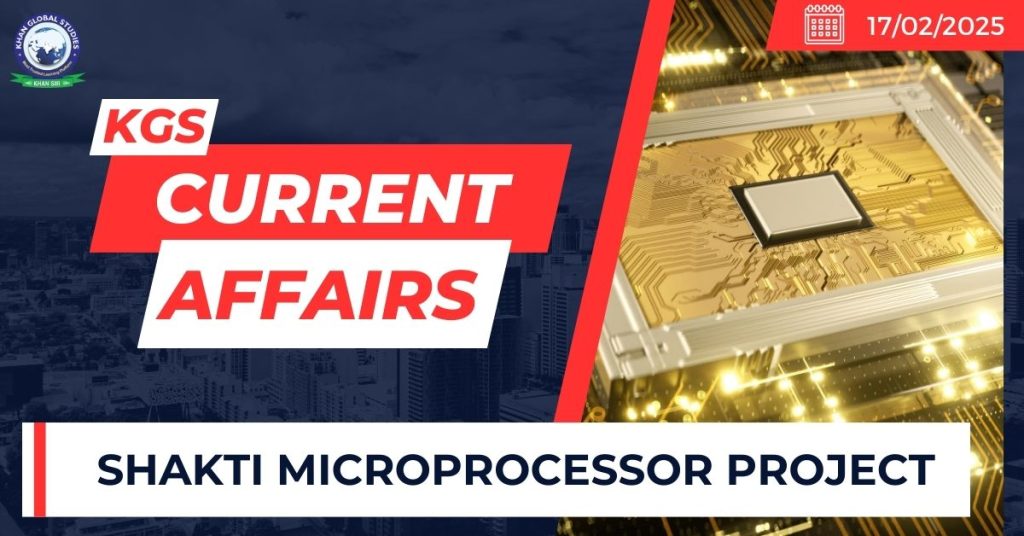Context:
IIT Madras and ISRO have developed an indigenous microprocessor SHAKTI for space applications.
SHAKTI Microprocessor Project

- It is led by IIT Madras at Prathap Subrahmanyam Centre for Digital Intelligence and Secure Hardware Architecture (PSCDISHA) in the Department of Computer Science and Engineering.
- The SHAKTI class of systems are based on RISC-V, an open-source Instruction Set Architecture (ISA), for designing custom processors.
- The Indigenous RISCV Controller for Space Applications (IRIS) chip was developed from the SHAKTI processor baseline.
Key Features of IRIS Chip:
- It was Developed to support ISRO’s command and control systems and other critical functions.
- Designed for fault tolerance and reliability, making it suitable for space missions.
- Includes custom modules like CORDIC, WATCHDOG and Timers and advanced serial buses.
- Can be expanded for future missions through multiple boot modes and hybrid memory extensions.
- It can be used in diverse domains from IoT and computing systems for strategic needs.
- This is the third SHAKTI chip successfully developed in India after RIMO in 2018 and MOUSHIK in 2020.
- IRIS chip was built using SCL Chandigarh 180 nm technology node which demonstrates India’s growing capability in semiconductor manufacturing.
- Semi-Conductor Laboratory (SCL) is an autonomous body under the Ministry of Electronics & Information Technology (MeitY).
The SHAKTI Processor Program:
SHAKTI is an open-source initiative taken in 2014 by the Reconfigurable Intelligent Systems Engineering (RISE) group at IIT-Madras.
It is backed by the Ministry of Electronics and Information Technology under its ‘Digital India RISC-V’ initiative (DIRV).
- DIRV was first announced in 2022 to enable the creation of Microprocessors for the future in India.
The aim of SHAKTI is to indigenously produce production-grade processors, complete System on Chips (SoCs), development boards and SHAKTI-based software platform that offer best-in-class security and visibility for users adopting RISC-V technology.

